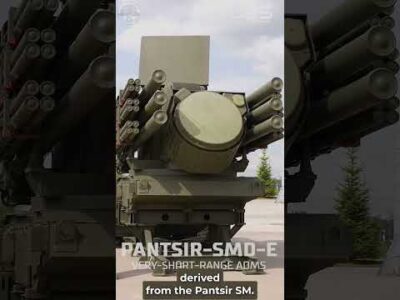
The U.S. Department of Defense awarded Fincantieri U.S. subsidiary, Marinette Marine (FMM), a nearly 800 million dollar contract for the concept design and construction of the first-in-class guided-missile frigate of the “FFG(X)” program for the U.S. Navy last week.
The contract envisages an option for 9 additional ships, as well as post-delivery availability support and crew training, with the cumulative value amounting to 5.5 billion dollars. The U.S. Navy plans to build 10 additional vessels as part of the future frigate program, for a total of 20.
With this success, Fincantieri reaps the rewards of a long-lasting commitment. In addition to the Littoral Combat Ships program, envisaging the construction of 16 vessels (10 of which already delivered), last December FMM was awarded a multi-billion dollar order for the construction of 4 Multi-Mission Surface Combatants (MMSC) to be delivered to the Kingdom of Saudi Arabia as a part of the US Foreign Military Sales program.
Fincantieri bid was successful in overcoming bids from Huntington Ingalls Industries, General Dynamics Bath Iron Works with Navantia’s F100 design and Austal USA with an up-gunned version of its trimaran littoral combat ship.

The detailed design phase will begin immediately, and construction will begin no later than April 2022. The first ship of the class will deliver by 2026 and reach initial operational capability by 2030.
Why did the US Navy choose Fincantieri’s FREMM-based frigates instead of a US shipbuilding company?
The U.S. Navy awarded a contract to Fincantieri, an Italian owned firm, to design and build a modified version of their frigates to U.S. specs, based on a successful existing class. The company’s shipyard is in Wisconsin and is already building the Freedom class LCS. These frigates will be built in the same yard in Wisconsin. The new ships will be built by American workers.
Although a foreign design, the American FREMM will be thoroughly Americanized, with U.S.-made sensors and weapons installed throughout the hull. The new Enterprise Air Surveillance Radar (EASR), developed by Raytheon for the new USS Enterprise aircraft carrier, will be the primary air sensor. The EASR will be coupled with the Aegis Combat System, a computer system that allows surface ships to detect, track, and engage a variety of surface and air threats, from high-flying ballistic missiles to low-flying cruise missiles. The ship is armed with a 57-millimeter M110 rapid fire deck gun. The ship will also carry up to 16 Naval Strike Missiles, a new anti-ship missile developed by Norway’s Kongsberg and currently deployed with the Littoral Combat Ships at sea.

There were several European offerings in partnership with American shipyards. Foreign firms with American-based partner firms or subsidiaries are increasingly common in defense contracting today.
Let’s have a look at the other factors:
- Design Maturity
The U.S Navy was looking for a design that was already in production at one level or another. The frigate, which will be built at the Italian firm’s Wisconsin-based subsidiary, is based on ships already in service with four navies. Fincantieri’s proposal is based on the Franco-Italian Fregata Europea Multi-Missione (FREMM) design, variants of which are in service with the Italian, French, Egyptian, and Moroccan navies. The FREMM based design, which is a very mature and still-in-production design, long appeared to be a very attractive and low-risk option for the US Navy.

- Cost-Effective Solution and Low Life Cycle Cost
According to Assistant Secretary of the U.S. Navy for Research, Development and Acquisition James Geurts, the first hull will cost $1.281 billion, which includes the design money for both the ship and for the work needed at the shipyard to set up a production line. It also includes all the government-furnished equipment, including things such as the Raytheon AN/SPY-6-derivative radar and Lockheed’s Aegis Combat System. The next hulls in the buy should cost significantly less. The U.S. Navy is aiming for a price tag of $800 million in 2018 dollars, with the threshold at $950 million. But Geurts thinks he can beat both numbers. The frigate is relatively inexpensive compared to a $1.9 billion Arleigh Burke-class destroyer.
FREMMs feature a highly efficient combined diesel-electric and gas (CODLAG) propulsion system, which could make the FFG(X) variant relatively cheap to operate, as well.
- The Calender
At present, U.S. Navy expects the construction of the first FFG(X) to begin no later than 2022 and then take delivery of that ship in 2026. Depending on when it might exercise the remaining options in the contract, it could have eight more in various stages of production when the first one arrives.
The detailed design of FFG(X) starts right away. The first ship will be delivered in 2026 and will be operational by 2030.
The contract should be wrapped up, all 10 hulls, by 2035. The intention is to buy 20 hulls, though it’s unclear if Marinette will build al 20 or if the Navy will identify a second source.

- Flexibility
Fincantieri highlighted that they could grow the electrical capacity of the ship fairly easily and that all the major computer and engine gear could be swapped out without cutting a hole in the ship, as is often necessary with current classes in the U.S. Navy’s inventory. The hybrid-electric drive gives the ship the ability to crank out 12 megawatts of power. That’s enough electricity to field a small railgun or heavier laser weapon system in a future update.















Comments